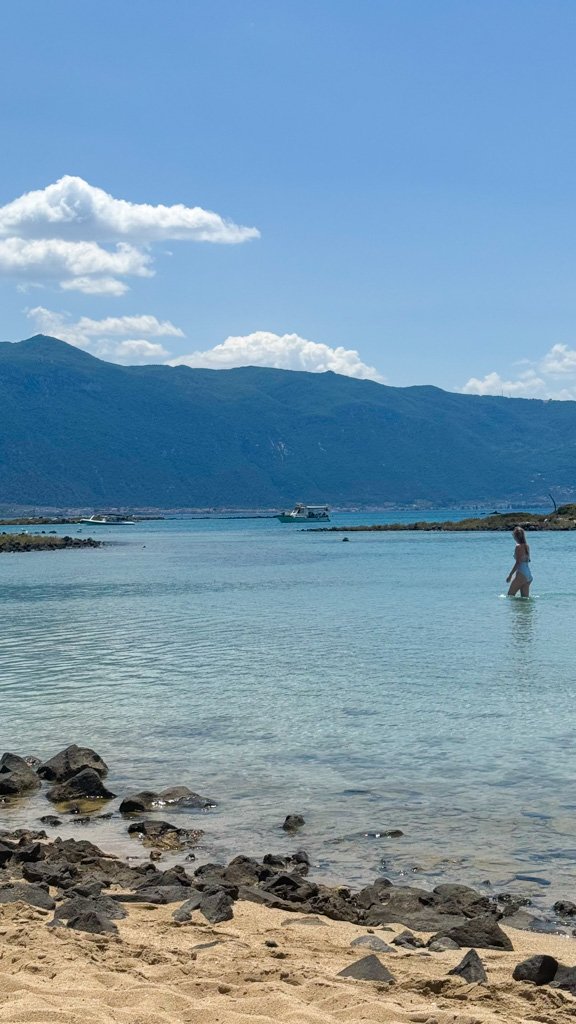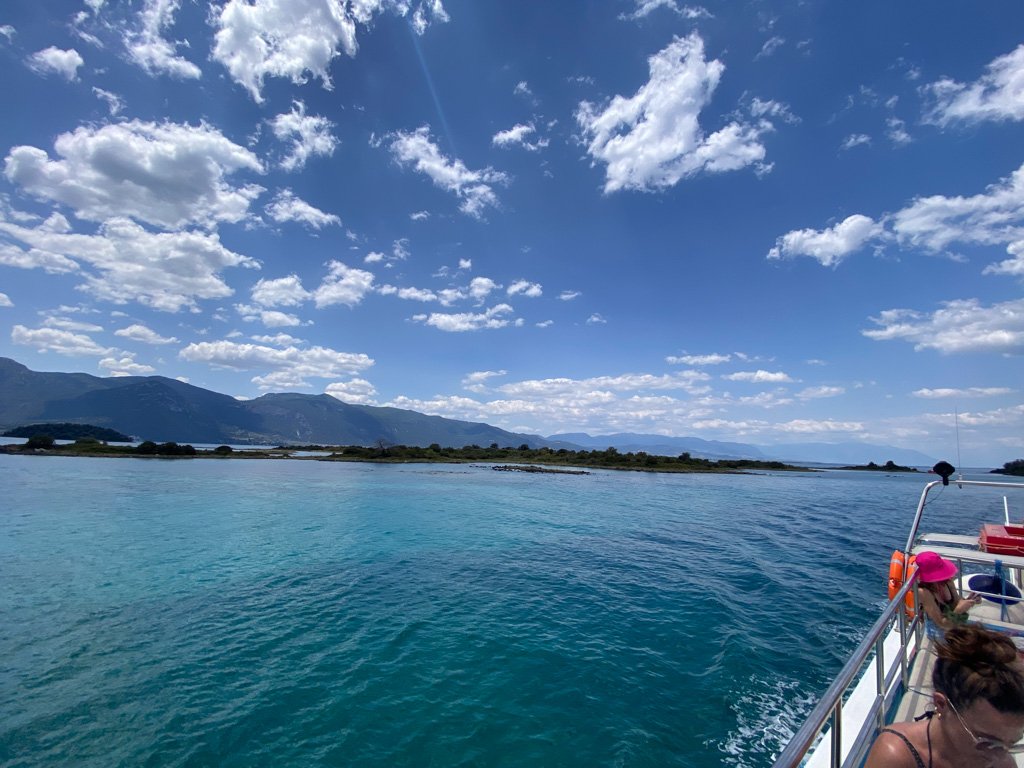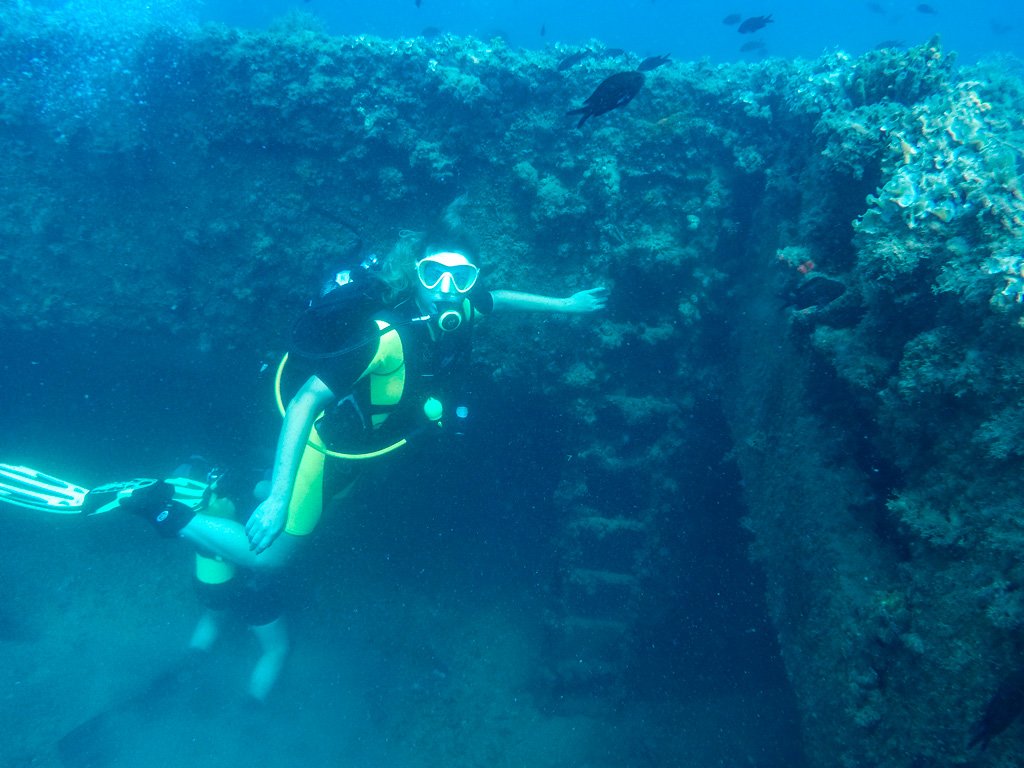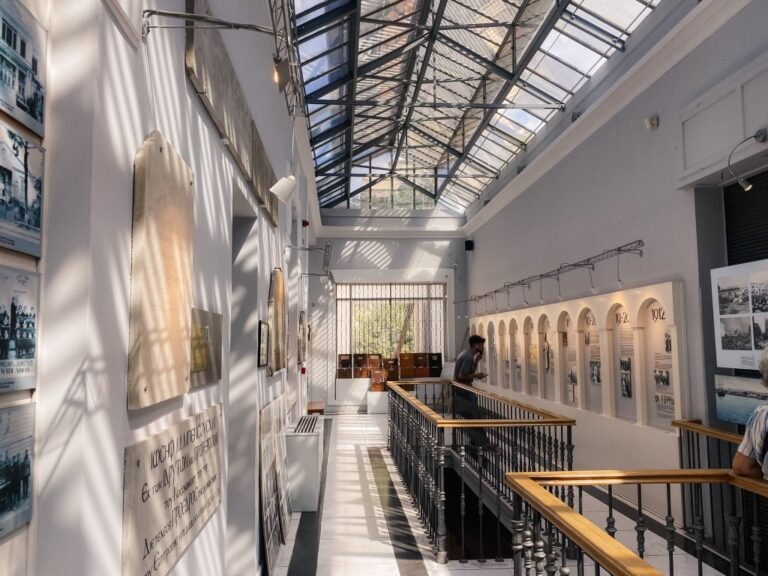This article may contain affiliate links. When you purchase something we recommend, we make a small commission. You don’t pay anything extra. 💘 For more details, check out our Terms of Use page.
The islands of Lichadonisia or Lichades are tucked away inside the Malian Gulf, just opposite the northernmost point of Evoia near Kavos.
This small complex or mini archipelago offers an idyllic escape for travelers because of its natural beauty, tranquility, and unique landscape. Often dubbed the “Greek Bahamas” or the “Seychelles of Greece”, Lichadonisia has pristine, shallow, waters ideal for lounging by the water, swimming, or walking around to explore the area.
Lichadonisia is generally well known to locals and Greek visitors but has recently started attracting international attention due to its exotic beauty and proximity to the capital.

Table of Contents
ToggleWhere is Lichadonisia?
This mesmerizing group of islets lies off the coast of Central Greece in North Euboia, or directly opposite the coastal town of Kamena Vourla, approximately 140 kilometers northwest of Athens.


How many islands are in Lichadonisia?
There are seven islands and islets, including Manolia (the biggest one and once inhabited) and the rest are Strongyli, Mikri Strongyli, Steno, Vagia, Vorias, and Limani.

What is the history of Lichadonisia?
Lichadonisia’s charm is not only rooted in its natural beauty but also in its rich history and mythology. According to Greek mythology, the islands are named after Lichas, the servant of Hercules who brought him the poisoned shirt from his cheated wife, Deinaira. The legend goes that Lichas was thrown into the sea by Heracles in a fit of rage, and where he fell, the islands of Lichadonisia emerged.
Α more scientific and thus likely explanation links the emergence of Lichadonisia to an earthquake. Thucydides, one of the greatest ancient Greek historians, wrote about the tsunami back in 426 B.C. which could have led to the formation of these small islets.
How to get to Lichadonisia
For those that live or are visiting Athens, Lichadonisia offers one more advantage, they are insanely easy to reach – considering their unique appeal.
Even if you aren’t in Athens though, there are ways to incorporate them into an itinerary when you are visiting Evoia or traveling around Central Greece.
- From Athens, you follow the main European Road (E75) motorway, north towards Kamena Vourla, and arrive at your destination in under 2 hours. Daily boats depart from Kamena Vourla towards Lichadonisia at 11:00 and 12:00 (expect some seasonal changes) and return at 16:00, 17:00 and 18:00.
*We took the 12:00 o clock boat and returned at 17:00 which we thought was plenty of time.
- An alternative option is to drive to Kavos in Evoia, which from Athens could take up to 4 hours of driving. But… offers a different and more scenic route. From Kavos, you will also find departures every 30 minutes starting at 11:00 am until around 17:30.

How is the boat ride to Lichadonisia?
We took the boat from Kamena Vourla (not Kavos) but speaking to most locals who have done this route frequently, there aren’t many major changes. The return ticket at the time of writing is 15 euros per person.
The route takes about half an hour to get to the islands, with small stops to discuss the history of the area, spot the shipwreck from the glass bottom, and try to find the seals that have in recent years called Lichadonisia home. I found the history tour a much-needed and interesting part of the cruise. There are no stops on the way back, meaning you return in under 10 minutes.

Where to swim
The boat company we chose stopped at the main island called Monolia. The name comes from the numerous olive oil trees present on the island. The main beach of Monolia comes equipped with a lively beach bar, and organized amenities, such as sunbeds, cold drinks, and a canteen for food.
Because most boats arrive here, we found this the least exciting option for bathing. However, it suits those who prefer a lively atmosphere. The walk from where the boat drops you off to the beach is less than 2 minutes.
If you are visiting in July and August, expect most sunbeds to be taken by midday, especially during weekends. It is best to come prepared with your umbrella since the beach doesn’t offer a lot of natural shade.
There is also a second organized beach on the island opposite Monolia called Mikro Lihadonisi. The canteen and beach bar there is often referred to as “New Beach” vs the “Old Beach” on the main island.

Did people use to live in Lichadonisia?
Yes, the island of Monolia had a small permanent population until the 1960s, and 5 remained in early 1980.
The lack of running water and electricity seems to have challenged the last final occupants of the island, mostly fishermen.
Actually, if you want to visually figure out which island is which, you can do so by spotting the small chapel of Agios Georgios. The church is usually locked but is used during the summer for weddings and baptisms.
The small white and blue building is located in the southern part of Monolia, near the abandoned fishermen’s settlements. From the main beach bar, there is a small footpath marked with white stones that will lead you straight there in under 2 minutes.

The shipwreck of Pioneer I
When you do a cruise to Lichadonisia, the boat will stop at the shipwreck of Pioneer I. The general outline of the ship is visible since it now lives at a depth of about 10m. It was the first concrete ship to be built and launched in occupied Greece, for use by the German army during 1941-1944.
According to the records, the ship was attacked while carrying 200 tons of coal, resulting first in its occupation by Greek rebels and then its sinking.
It is also possible to dive in the area, to explore the shipwreck up close, and would recommend scheduling your dive for a weekday since there are fewer vessels and boats in the water.


Seals in Lichadonisia
One of the most exciting reasons to visit Lichadonisia is to see the seals. The islands are home to a small but growing population of Mediterranean monk seals (Monachus monachus), who happen to be one of the most endangered marine mammals in the world. We spotted some during our cruise, but locals have also seen them up close at the beach while swimming.


Where to stay
Lichadonisia does not offer accommodations but there are plenty of options nearby. The coastal town of Kamena Vourla is a popular choice, offering a range of hotels, guesthouses, and resorts. Kamena Vourla is known for its therapeutic hot springs, so consider staying in a hotel that offers spa facilities to unwind after a day of island exploration. One of the best in the area is the 5* resort of Mitsis Galini, with a spa, 5 swimming pools, and various fitness and entertainment activities.
If you are looking for something more simple, the family-run and budget-friendly Ourania’s Apartments is a great option.
Another option is to stay in Kavos or Agios Konstantinos, both of which provide easy access to the ferry services to Lichadonisia and offer a quieter, more local experience.
Other things to do in the area
A trip to Lichadonisia can easily be combined with exploring the surrounding areas of Central Greece and Northern Evoia, offering a richer travel experience. Whether you’re interested in history, nature, or simply soaking up the local culture, there are plenty of activities and sights to enjoy before or after your island adventure.
While checking out activities, browse Get Your Guide. There are numerous experiences and activities on offer that might introduce you to something new you didn’t even know about.
- Leonidas Monument in Thermopylae: A visit to Lichadonisia can be easily paired with a trip to the historic site of Thermopylae, located about 30 minutes from Kamena Vourla. Thermopylae is known for the Battle of Thermopylae in 480 B.C. This is where King Leonidas of Sparta and his 300 warriors made their legendary stand against the Persian army.
- Delphi Archaeological Site: Explore the ruins of the sacred temple of Apollo, learn about the Oracle and walk around the ancient theatre and stadium.
- Mount Parnassus: Drive around the villages of Mt Parnassus, hike in the autumn or spring, and ski in the winter.
- Edipsos in Evia: Famous for its thermal springs, Edipsos is a popular spa town that has attracted visitors since antiquity. The town offers several luxurious spas as well as public thermal baths.
- Visit the Monastery of Osios Loukas: For those interested in Byzantine history and religious sites, a visit to the Monastery of Hosios Loukas is highly recommended. Located about an hour and a half from Kamena Vourla, near the town of Distomo, this UNESCO World Heritage site is one of the finest examples of Byzantine architecture in Greece.
Sustainable Tourism in Lichadonisia
Lichadonisia is a true paradise. Of course, as it gains popularity there are threats to the natural beauty and ecological balance of the islands and its inhabitants.
- Leave No Trace: Take all your trash with you and dispose of it properly. Avoid leaving any waste on the islands or in the sea.
- Respect Wildlife: Do not disturb the seals or other wildlife. Apart from dangerous, these are wild animals, and feeding or approaching them is not allowed.
- Use Eco-Friendly Products: If possible, consider bringing biodegradable sunscreen and avoid single-use plastics to minimize your environmental impact.
ESSENTIAL INFORMATION
Must Know When Visiting Greece
- Emergency: Dial 112 for all emergencies. For police, dial 100. For ambulance 166. For fire dial 199.
- Language: English is widely spoken in most tourist areas. Common phrases to learn are “Kalimera” (Good morning), “Yia” (Hello and Bye – informal), and “Efharisto” (Thank you).
- Water: Tap water is safe in Athens, mainland Greece and a small number of islands. Always ask beforehand.
- Driving: Right-hand side, international driving permit recommended. Book your rental car with Discover Cars for the best rates and comparisons across all major and local companies.
- Accommodation: Booking.com for the most options on hotels, apartments and hostels. Free cancellation in a lot of places and no need to pre-pay. Great for their rewards points system.
- Islands: There are a lot of islands, spread out around the country. Start with a map or ferry service to get an idea of travel times. Ferry Scanner is the best for ferry bookings to the Greek islands.
- Activities: From cultural sights to day trips, food tours and city guides, use Get Your Guide.
- Public Transport: For Athens, use the Athens Metro. If you are not renting a car, use Trains (Hellenic Train) or KTEL (Public Buses) services.
- Domestic Airlines: The main airlines for air travel are Aegean Airlines and Sky Express. I recommend Aegean Airlines and its rewards program.
- Taxi: Always use a taxi app, instead of flagging down a taxi from the road. Use FREE Now (formerly BEAT).
- Culture: A siesta nap is still common in less touristy areas. This also means businesses will close between 2 PM – 5 PM. Except for hospitality businesses, everything is closed on Sundays.



